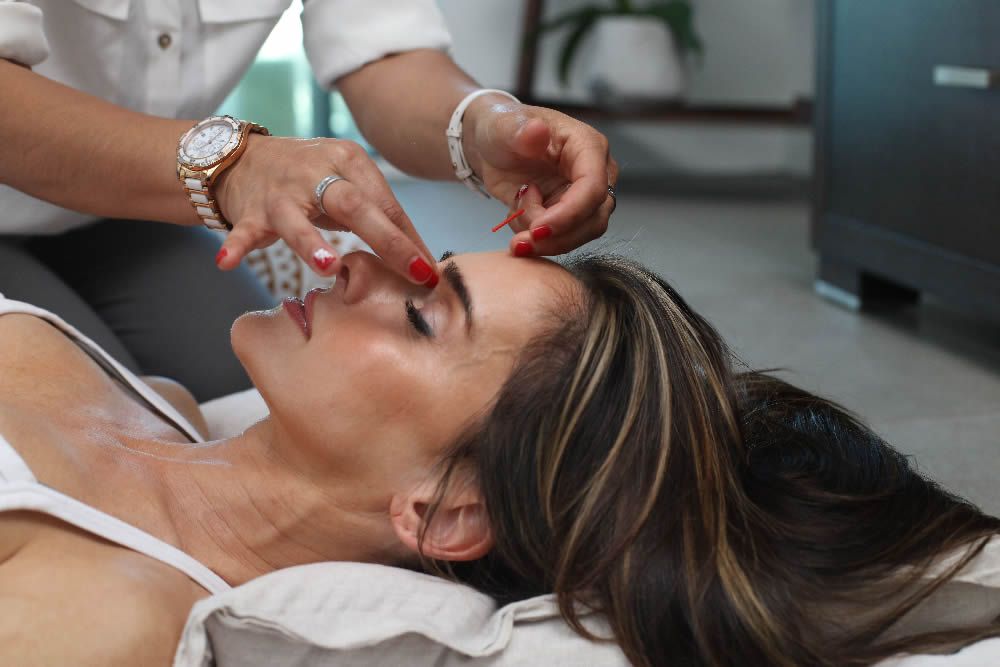Our Approach to Health and Rehabilitation
All About Acupuncture
By Felicia Assenza, ND
Acupuncture has been steadily gaining popularity in North America over the last while. It’s showing up in medical and wellness settings of all sorts, and even has promising research for use as a primary alternative to addictive pain medications in the opioid crisis we are currently facing1. While it may seem new and exciting here on the Western side of the world, acupuncture has actually been around for thousands of years.

The magic cure?
Acupuncture has been developed over thousands of years as part of a system of medicine known has Traditional Chinese Medicine (TCM) and, as you may have guessed, its beginnings trace back to Ancient China.
As you can imagine, there are large differences between the culture in China (especially Ancient China) and our modern Western culture. For this reason, learning about acupuncture and TCM requires some understanding of a culture much different from the one we’re used to on this side of the world. It’s very much like learning a new language! For this reason, there tends to be a lack of understanding around the topic, leading to explanations like “It’s magic!” and statements like “I don’t believe in all that.”
While I’m all for believing in magic, I also think it’s important that the vast amount of critical thinking, observation, and experimentation that have gone into developing acupuncture does not get overlooked. It’s also exciting to note that research is starting to help us explain acupuncture on a more physiological level2,3, in a way that the Western medical system can more easily understand.
How can it help?
Acupuncture has been traditionally used, not only in pain management, but for many ailments we’re familiar with such as insomnia, allergies, autoimmune disorders, anxiety, depression, hormonal issues, neuropathy, arthritis, migraines, nausea…the list goes on. When used in the holistic context of Traditional Chinese Medicine, treatment involves looking at you as a whole person (body, mind, and spirit). It involves a thorough intake and understanding your history, symptoms and lifestyle, along with careful observation of physical signs of what may be happening in your body.
Once we have a clear understanding of you and which acupuncture points may benefit you, thin needles are inserted at those points, and you’re left to relax and let healing do its work. Most patients don’t even feel the needles and leave the office feeling relaxed and rejuvenated. It usually takes about 4-6 weeks before lasting improvements in symptoms are seen. Diet and lifestyle changes are almost always part of the process as well.
Are you interested in trying acupuncture? Do you have more questions about how it works or how it can help you? Let’s chat. Book a free consult and I’d love to answer your questions! You may even want to check out one of our acupuncture meditation sessions.
In the meantime, check out this entertaining video of Oprah getting acupuncture.
Or this more realistic and educational video of what an acupuncture session actually looks like.
Sources
- “Acupuncture's Role in Solving the Opioid Epidemic: Evidence, Cost-Effectiveness, and Care Availability for Acupuncture as a Primary, Non-Pharmacologic Method for Pain Relief and Management–White Paper 2017.” NeuroImage, Academic Press, 7 Nov. 2017, sciencedirect.com/science/article/abs/pii/S2095496417603789.
- Yang, Edward S., et al. “Ancient Chinese Medicine and Mechanistic Evidence of Acupuncture Physiology.” Pflügers Archiv - European Journal of Physiology, vol. 462, no. 5, 2011, pp. 645–653., doi:10.1007/s00424-011-1017-3.
- Vanderploeg, Kristin, and Xiaobin Yi. “Acupuncture in Modern Society.” Journal of Acupuncture and Meridian Studies, vol. 2, no. 1, 2009, pp. 26–33., doi:10.1016/s2005-2901(09)60012-1.
- Kaptchuk, Ted J. The Web That Has No Weaver: Understanding Chinese Medicine. McGraw-Hill, 2008
Learn More:
- Structure and Function
- The Mind Body Connection
- Managing Stress
- The Body as a Self Healing Mechanism
- The Concept of Compensations
- The Trouble with Core Stability
- What is scar tissue?
- Importance of Regular Maintenance
- Understanding Inflammation
- Inflammation and the Digestive System
- Plantar Fasciitis
- Sciatica
- What the Blue Jays Should Learn from Josh Donaldson's Injury
- Understanding Hypertension
- Myofascial Unwinding
- Detox
- Myofascial Release
- Acupuncture
- Is Marcus Stroman Healthy?
- Water
- The Placebo Effect
- Jays Matt Shoemaker Tears ACL
- To Stretch or Not To Stretch
- Prostate Health
- Changing Subconscious Beliefs
- How Does Muscle Testing Work Online
- Paul Married Alice: Is There A Perfect Match?
- Ways to Deal with Anxiety for Teens
- What is a woman’s most crucial role in her partner’s life?
- A Cold – Your Body Speaks Your Mind
CONTACT
-
Phone:905-335-0372
-
E-Mail:This email address is being protected from spambots. You need JavaScript enabled to view it.
-
Address:3-4300 Upper Middle Rd.
Burlington, ON L7M4P6
